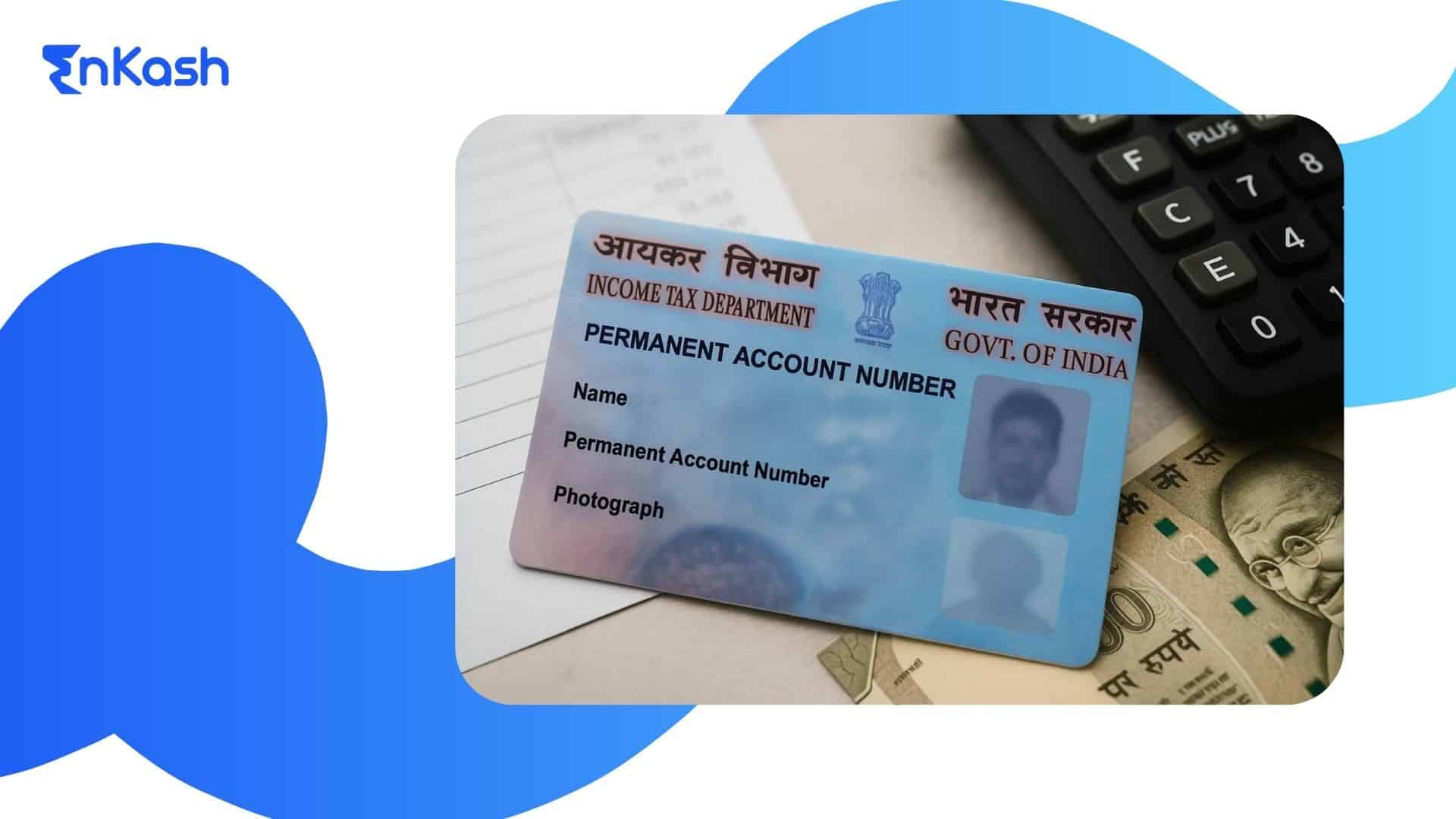The term NBFC actually refers to a Non-Banking Financial Company. At its core, it’s a financial institution that does many of the things banks do, lending, financing, and investing, yet it doesn’t hold a full banking license.
These companies register under the Companies Act of 1956 or 2013. Their focus is money in motion. Loans, credit lines, asset financing, investments, and similar services are their priorities. Over time, NBFCs have become essential. They step in where banks hesitate. They reach businesses and individuals that would otherwise struggle for access.
Why are NBFCs crucial? That’s what this guide unpacks. You’ll see what NBFCs actually are, the features that define them, the different types, and how the licensing and regulations work. We’ll also look at the NBFC sector in India, its weight in the economy, and the everyday relevance for both general readers and startup owners.
NBFC Meaning and Definition
An NBFC, or Non-Banking Financial Company, is a financial institution that works much like a bank but isn’t classified as one. Think of it as a company that provides loans, invests in stocks, bonds, and debentures, or deals in leasing, hire purchase, insurance, and even chit funds.
An NBFC sits outside the traditional banking system yet handles money and credit in ways that matter to everyday life and business. They’ve become a bridge, reaching people and markets that banks either don’t reach or choose not to serve.
Oversight comes from the Reserve Bank of India (RBI). Under the RBI Act of 1934, Chapter III-B, these companies must follow strict rules to operate. The RBI uses what’s called the “50-50 principal business test” to decide if a company qualifies. The rule is simple. At least half of its total assets must be financial in nature, and half of its income must come from those financial activities. Meet that standard, and the company must register with the RBI as an NBFC. Fall short, and it won’t cut.
The NBFC full form, Non-Banking Financial Company, itself explains the difference. These firms may lend, invest, and offer financial products, but they do not enjoy the same powers as banks.
Key Functions and Features of NBFCs
NBFCs don’t operate like banks, though at first glance the services can look strikingly similar. They lend, they finance, they invest. Yet they sit outside the banking license framework, working instead as companies under the Companies Act. That distinction matters because while they move money and credit around the economy, they can’t brand themselves as banks, nor accept deposits on demand.
Now, what makes them interesting is how they’ve positioned themselves.
Credit and Lending
Mainly, NBFCs are lenders. They offer personal loans, vehicle finance, small-ticket consumer loans, even microfinance for households that banks tend to overlook. Many of the NBFCs have carved niches here. Some finance machinery or trucks through hire-purchase agreements, others hand out small, unsecured loans where a bank might hesitate. It’s this ability to serve people with thinner credit histories that keeps NBFCs relevant.
Investments and Capital Flow
Lending isn’t their only business. Many NBFCs behave like investors, channeling funds into bonds, equities, or government securities. Some take the role of investment companies, others venture into funding startups or sector-specific projects. That function gives them a dual identity of both lender and investor, depending on where they see value.
Backing Infrastructure
India’s highways, power plants, and telecom projects have NBFC fingerprints all over them. Certain categories, like Infrastructure Finance Companies, are legally bound to keep the bulk of their assets in long-term infrastructure loans. Beyond mega projects, they also finance trucks, tractors, construction gear, and so on.
Serving the Underserved
Where banks draw the line, NBFCs often step in. Rural borrowers, small shop owners, informal sector workers, and even higher-risk clients struggle for access to formal finance, and NBFCs reach out to help them. Gold loans, housing finance, microfinance – each category responds to a very real, very specific need. This is how they drive financial inclusion, one segment at a time.
Raising Money Differently
Banks live on deposits. NBFCs don’t. Instead, they raise funds through bonds, debentures, commercial papers, or by borrowing from banks and institutions. It’s capital-market driven, not depositor-driven. Some are permitted to accept fixed-term deposits, though never on demand like a savings account. That funding model shapes the way they lend and the interest rates they charge.
Tech-Driven Growth
In the last decade, NBFCs have embraced technology in a way banks struggled to. Mobile apps for loan applications, credit checks using data analytics, and alternate credit scoring that goes beyond traditional CIBIL reports have become standard. Many fintechs in India either run as NBFCs or partner with one, building sleek digital lending models that move far faster than legacy systems. That digital reach has opened doors to customers in remote towns and villages who were invisible to the formal credit market before.
Types of NBFCs in India
The Reserve Bank of India doesn’t lump all NBFCs in India into one bucket. It sorts them by what they do, how big they are, and whether they take deposits. At the broadest level, there are Deposit-taking NBFCs (NBFC-D) and Non-deposit taking NBFCs (NBFC-ND). Within those, the regulator adds further categories based on scale and purpose.
Here’s a tour of the main types and what sets each apart.
Investment and Credit Company (ICC)
Think of ICCs as the “generalist” category. They handle lending, asset financing, and investments, but don’t fall neatly into a narrower box. RBI folded older types like Asset Finance Company and Loan Company into this group. In practice, most day-to-day financing NBFCs you see now operate as ICCs.
Housing Finance Company (HFC)
These are the players behind home loans. To qualify as an HFC, at least 60 percent of total financial assets must sit in housing finance, and about half of that must be in individual housing loans. They once answered to the National Housing Bank, but since 2019 RBI has taken over supervision. Big names such as LIC Housing Finance and the now-merged HDFC Ltd. came under this bracket.
Infrastructure Finance Company (IFC)
This class is built for large-ticket projects like roads, power plants, and telecom networks. To earn IFC status, a company has to keep at least 75 percent of its assets locked into infrastructure loans. On top of that, it needs a hefty minimum net worth and a strong credit rating. The barrier to entry is high because the risks and sums involved are massive.
Infrastructure Debt Fund (IDF-NBFC)
Unlike IFCs, IDFs don’t originate new loans. Instead, they raise long-term funds through bonds (five years or more) and use them to refinance infrastructure projects that are already running. Only certain NBFCs can sponsor an IDF, but the idea is simple – channel long-term investor money into critical projects.
Microfinance Institution (NBFC-MFI)
These are the backbone for small, collateral-free loans. They must keep the majority of their books, RBI sets it at 75–85 percent, in micro-loans to low-income households. The focus is usually women, self-help groups, and tiny entrepreneurs in rural or semi-urban belts. It’s about financial inclusion rather than big corporate credit.
NBFC-Factor
A specialized group that lives off factoring. They buy invoices or receivables from businesses and give them immediate cash, helping those businesses smooth out working capital. Most of their income has to come from this factoring business.
Core Investment Company (CIC)
CICs don’t lend like other NBFCs. They exist mainly to hold stakes in their group companies. Systemically Important CICs (CIC-ND-SI) are those with assets above ₹100 crore, and they must keep at least 90 percent of their investments within the group. In short, CICs are financial holding arms of big conglomerates.
Peer-to-Peer Lending Platform (NBFC-P2P)
It is a relatively new entry. They don’t lend from their own balance sheet at all. Instead, they run digital marketplaces that connect individual lenders with borrowers. RBI caps how much each party can lend or borrow, to keep risks in check.
Account Aggregator (NBFC-AA)
These are actually data carriers, not lenders. With a customer’s consent, they pull financial information, like bank statements or mutual fund holdings, from multiple institutions and share it securely with whoever the customer authorizes. It’s about the portability of financial data, not credit.
RBI’s Scale-Based Framework
In 2021, RBI added another lens – the Scale-Based Regulatory framework. It places NBFCs into four layers, Base, Middle, Upper, and Top, depending on their size and risk. Small, local lenders fall into the Base Layer. Heavyweights that touch systemic risk sit in the Upper Layer, where rules are much tighter. The Top Layer is reserved for the rare NBFCs that get large and risky enough to need bank-like scrutiny.
NBFC Regulations and License Requirements
Who regulates NBFCs? The Reserve Bank of India (RBI) keeps a close eye on the NBFCs. Everything is anchored in the RBI Act of 1934, Chapter III-B, which sets the rules. RBI issues directions, checks compliance, and ensures these companies stay financially healthy. Without that oversight, the entire system could wobble.
Now, here’s the catch. If a company wants to call itself an NBFC, it can’t just print a nameplate and open a shop. It needs a Certificate of Registration (CoR) from the RBI. This license is not optional; Section 45-IA of the Act makes it clear that without license, you can’t start the business.
The Road to an NBFC License
How do you actually get one? It’s a layered process:
- Incorporation first: You have to be a company under the Companies Act. Partnerships and proprietorships are ruled out.
- Capital requirement: Right now, the floor is ₹10 crore as Net Owned Funds. A few years ago it was just ₹2 crore, but RBI raised the bar in 2022. Existing NBFCs got breathing space until March 2027 to comply. For some specialized NBFCs, the entry fee is even steeper ₹300 crore if you’re in infrastructure finance, ₹100 crore for mortgage guarantee firms.
- Promoters and Management: RBI doesn’t just check the money. It digs into the promoters’ and directors’ backgrounds. Financial soundness, clean track record, no messy credit history are a must. At least a third of the board must have actual finance experience. They’re serious about the “fit and proper” rule.
- Paperwork and plans: A business plan is non-negotiable. You have to spell out what your NBFC will do, back it with audited accounts, incorporation papers, compliance reports, even bank details. Applications go through RBI’s online system (COSMOS, moving now to PRAVAAH), and a physical file also has to land at the regional office.
- Preparedness: The company must show it’s ready to play by RBI’s rules of capital adequacy, norms for asset classification, provisioning for bad loans, codes of conduct, and grievance redressal.
After the License
Getting the certificate isn’t the end of it. RBI doesn’t just hand you the license and walk away. Once you’re in, you’re under constant supervision. Regular returns need to be filed, financial health checked, and lending norms followed. RBI inspectors can walk in, ask questions, and review records. If something is not in place, they step in.
So while NBFCs are called “non-banking,” their world is tightly wired into the RBI’s regulatory system. It’s this balance, flexibility to serve different markets, yet scrutiny to keep things safe, that makes the sector both dynamic and stable.
NBFC Regulations
NBFCs, though not banks, have a robust regulatory framework in India to ensure they operate safely:
Prudential Norms
Start with a capital. Every NBFC must hold a Capital to Risk-Weighted Assets Ratio (CRAR), usually fixed at around 15%. Why? Because without a buffer, one big wave of defaults could wipe them out. It’s not optional. Along with that, NBFCs follow strict rules about income recognition, how loans are classified, and how much money must be set aside for doubtful debts. Banks do the same. These rules mean losses are visible early and provisions are made before the hole grows too deep.
Exposure Limits and Liquidity Rules
Then there’s concentration risk. No NBFC can lend heavily to just one borrower or a single business group. Imagine one domino falling and the whole balance sheet tumbling. That’s what the RBI wants to avoid. For the larger NBFCs, the bar is even higher. They must maintain a liquidity buffer. It can be considered a store of high-quality, easily sellable assets. If funding dries up tomorrow, this reserve can be cashed out quickly to meet obligations. It’s a survival kit for tough days.
Corporate Governance and Transparency
The governance requirements are not token either. Bigger NBFCs must put independent directors on their boards, form risk management committees, and run regular internal audits. They can’t hide behind opaque practices. RBI expects them to publish clear financial statements, disclose key ratios, and, in some cases, keep a credit rating alive at all times. It’s about accountability. Investors and borrowers need to see what’s going on inside the company.
Customer Protection
Rules aren’t just about accounting lines or ratios. They extend to how customers are treated. NBFCs must keep interest rates clear and upfront, with no hidden clauses tucked away in fine print. Harassment in loan recovery is strictly off the table. Just like banks, they are bound by KYC checks and anti–money laundering norms. RBI has even gone as far as laying down explicit directions that recovery agents cannot use threats or force. And when things do go wrong, borrowers should have a proper complaint channel that actually leads to resolution.
Activities They Cannot Do
Some doors remain closed. NBFCs cannot accept demand deposits. That means no savings accounts, no current accounts, no “withdraw anytime” deposits. A handful of NBFCs can take fixed deposits, but only under the RBI’s ceilings. They’re also kept out of the payment and settlement system. So they can’t issue cheques in their own name or handle clearing services. These restrictions draw a thick line between NBFCs and banks, and they exist mainly to shield public money.
Where RBI Steps Back
Now, here’s a subtle point. Not every financial company comes under the RBI. If the main business is insurance, SEBI-regulated broking, or state-regulated chit funds, then RBI doesn’t step in. The goal is to avoid double regulation. But if lending or investment is the company’s core business and no other watchdog is in charge, then the RBI takes over, and that company has to register as an NBFC.
Why This Matters for Entrepreneurs and Startups
For anyone stepping into financial services, the regulatory framework isn’t just paperwork. It decides whether you can even get started. Setting up an NBFC means more than registering a company; you’ll need to clear licensing hurdles, maintain the required capital, and meet governance standards that aren’t negotiable.
The entry bar is high, but the upside is just as big. A license gives you legitimacy, something that investors, customers, and regulators all look for before trusting a new financial venture. It also provides the legal foundation to lend money without stepping outside the law. That’s why so many fintech players either fight through the licensing process themselves or partner with an NBFC that already holds one.
For a startup, this can be the doorway into finance. Instead of waiting on traditional banks, where approvals move slowly and the room for innovation is limited, an NBFC structure allows quicker experimentation and product rollouts. In short, it’s the path that has let many young companies carve out space in lending and digital finance.
Conclusion
NBFCs sit in the space that banks don’t fully cover. They make credit and financial services easier to reach for ordinary Indians, and they’ve become a lifeline for sectors like small businesses, housing, transport, and even farming. The Reserve Bank of India keeps them under watch, but unlike banks, they still have more room to move and experiment. That balance of regulation and flexibility has allowed them to grow quickly.
For anyone trying to understand money choices, knowing how NBFCs work is useful. It can help you decide where to borrow, where to invest, or even whether building a financial venture of your own makes sense. Their story isn’t smooth. It’s been about setbacks, recoveries, and new opportunities, but it’s also about steady expansion. Today, they’re not just filling gaps; they’re part of India’s financial backbone, pushing inclusion and growth forward in ways banks alone cannot.
FAQs
1. Can NBFCs accept deposits from the public in India?
NBFCs cannot accept demand deposits like savings or current accounts, which are exclusive to banks. However, certain NBFCs with RBI approval can accept fixed deposits for a minimum maturity period, subject to strict regulations and limits. Even then, these deposits are not insured by DICGC.
2. How are NBFCs different from microfinance institutions (MFIs)?
All NBFC-MFIs are NBFCs, but not all NBFCs are MFIs. MFIs specialize in providing small, collateral-free loans to low-income households, while NBFCs may operate across housing, infrastructure, vehicle finance, and more. NBFC-MFIs must also follow additional RBI guidelines to protect vulnerable borrowers.
3. What role do NBFCs play in financing startups and small businesses?
NBFCs support startups and MSMEs by offering loans based on cash flow, alternate credit scoring, or movable collateral. Since banks can be conservative with lending, NBFCs provide faster approvals and flexible terms, making them a vital funding source for entrepreneurs and small enterprises.
4. Are NBFC loans more expensive than bank loans?
NBFC loans usually come at slightly higher interest rates compared to banks. This is because NBFCs raise funds from markets and banks instead of low-cost deposits. Despite this, many borrowers choose NBFCs for faster disbursement, simpler paperwork, and willingness to serve customers banks might reject.
5. Can foreign companies own NBFCs in India?
Yes. Foreign Direct Investment (FDI) is allowed up to 100% in NBFCs under the automatic route, provided the NBFC is engaged in permitted financial activities. This makes NBFCs attractive for global players entering India’s financial services market, though they must still meet RBI licensing norms.
6. How do NBFCs raise funds to finance their lending activities?
NBFCs do not rely on savings accounts like banks. Instead, they raise funds through debentures, bonds, commercial papers, bank borrowings, and equity investments. Larger NBFCs also issue Non-Convertible Debentures (NCDs) to institutional and retail investors, creating a steady pool of funds for lending.
7. What happens if an NBFC fails or defaults?
If an NBFC fails, its depositors and creditors may face higher risks since NBFC deposits are not covered under deposit insurance. RBI can intervene, impose restrictions, or initiate resolution processes. For non-deposit NBFCs, investors and lenders bear the primary risk of default.
8. Can NBFCs offer digital lending services through apps?
Yes. Many NBFCs in India collaborate with fintech companies to offer app-based loans, instant credit lines, or buy-now-pay-later options. RBI mandates strict compliance with data privacy, fair lending practices, and grievance redressal for NBFCs using digital platforms to ensure consumer protection.
9. Do NBFCs have to follow the same KYC rules as banks?
Absolutely. NBFCs are required to comply with the RBI’s Know Your Customer (KYC) and Anti-Money Laundering (AML) guidelines. This means collecting documents like PAN, Aadhaar, or business registrations before offering loans or services, ensuring transparency and preventing misuse of financial channels for illegal activities.
10. Why are NBFCs called “shadow banks” in India?
The term “shadow banks” is often used globally for non-banking financial institutions that perform similar functions as banks but operate outside the full banking regulatory framework. In India, NBFCs are strictly regulated by RBI, so while they share some similarities, they are far from unregulated.












